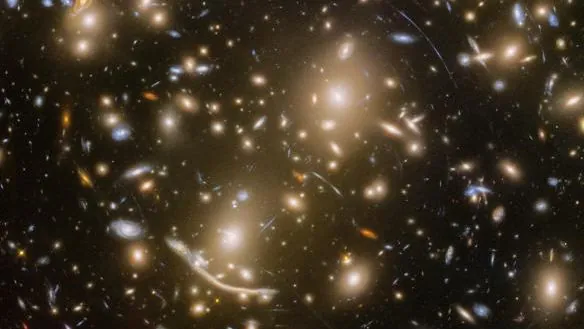
James Webb Space Telescope Makes Astonishing Discovery: 44 Stars Unveiled in Distant Galaxy!
2025-01-07
Author: Jia
Hold on to your telescopes! The James Webb Space Telescope (JWST) has shattered records by capturing images of a staggering 44 individual stars in a far-off galaxy, a feat once thought impossible. Located halfway across the observable universe, this region is so distant that observing individual stars was akin to spotting grains of dust on the moon with binoculars.
Rogier Windhorst, an astronomer from Arizona State University and a key player in this groundbreaking discovery, shared his astonishment: “I never dreamed of Webb seeing them in such large numbers. And now here we are, observing these stars popping in and out of the images taken only a year apart, like fireflies in the night. Webb continues to amaze us all!
But this discovery isn’t just about jaw-dropping images—it opens new avenues for research into the mysterious behavior of dark matter, a puzzle that has stumped astronomers for decades.
The collection of 44 stars represents the largest aggregation ever seen in the distant cosmos, residing in a hidden galaxy fondly nicknamed "the Dragon." The light from the Dragon's galaxy embarked on its epic journey about 6.5 billion years ago, at a time when the universe was merely half its current age. By examining the colors emitted by these stars, scientists concluded that they are red supergiants nearing the end of their dramatic lives—similar to Betelgeuse, the well-known star on Orion's shoulder that may soon explode!
The Dragon’s mesmerizing appearance results from a cosmic phenomenon wherein several duplicated images of a single spiral galaxy are expanded and distorted by the gravitational pull of the Abell 370 galaxy cluster. This cluster, situated about 4 billion light-years away in the constellation Cetus, contains hundreds of galaxies bound together by gravity. Among the glimmering cosmic gems, other distant, unseen galaxies linger as faint whispers of light, only visible through the immense magnifying power of gravitational lensing—transforming powerful telescopes, like the JWST, into extraordinary cosmic detectives.
Fengwu Sun, a postdoctoral scholar at the Center for Astrophysics at Harvard & Smithsonian and a co-author of the study, initially sought a gravitationally lensed galaxy when he stumbled upon the treasure trove of stars. “When we processed the data, it was exhilarating to find so many individual star points,” he remarked.
Interestingly, even the sophisticated JWST needed a little cosmic luck. Thanks to the chance alignment of floating stars within Abell 370 that temporarily aligned with the background Dragon galaxy, these stars were further magnified, allowing astronomers to discern them more clearly.
The brightness of these stars fluctuated, giving rise to a spectacular effect where they seemed to "twinkle" in and out of existence across different images, much like a dazzling Christmas tree lighting up the dark. Nicholas Foo, another co-author from Arizona State University, described the phenomenon perfectly.
This remarkable discovery not only enhances our understanding of distant galaxies but may also deepen our comprehension of cosmic structures and the enigmatic forces shaping our universe. Stay tuned, as the JWST continues to illuminate the mysteries of the cosmos!

 Brasil (PT)
Brasil (PT)
 Canada (EN)
Canada (EN)
 Chile (ES)
Chile (ES)
 Česko (CS)
Česko (CS)
 대한민국 (KO)
대한민국 (KO)
 España (ES)
España (ES)
 France (FR)
France (FR)
 Hong Kong (EN)
Hong Kong (EN)
 Italia (IT)
Italia (IT)
 日本 (JA)
日本 (JA)
 Magyarország (HU)
Magyarország (HU)
 Norge (NO)
Norge (NO)
 Polska (PL)
Polska (PL)
 Schweiz (DE)
Schweiz (DE)
 Singapore (EN)
Singapore (EN)
 Sverige (SV)
Sverige (SV)
 Suomi (FI)
Suomi (FI)
 Türkiye (TR)
Türkiye (TR)
 الإمارات العربية المتحدة (AR)
الإمارات العربية المتحدة (AR)